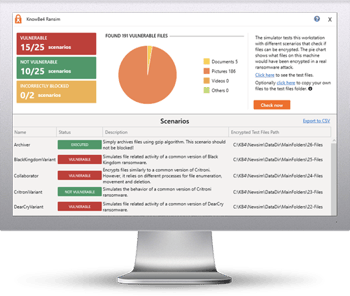‘Fake Ransomware’ as a Form of Social Engineering

Attackers are exploiting a vulnerability in a WordPress plugin to deface several hundred websites with phony warnings of ransomware, the Record reports. Researchers at Sucuri found that around three hundred WordPress sites displayed the text “SITE ENCRYPTED” followed by “FOR RESTORE SEND 0.1 BITCOIN.” (A Google search for this text shows that many sites are still affected.)
The researchers note that 0.1 Bitcoin is currently worth about $6,000, which is low enough that a small business might consider paying it if they thought their website had been encrypted. The Record says that no one has paid the ransom yet, which is probably due to the fact that the ransom note only appears on a few pages on the website. The attackers used a vulnerability in the legitimate business directory listing plugin Directorist.
“In checking the access logs for the website it was easy enough to determine the IP address responsible,” Sucuri says. Our client was located in the southern United States, however we saw quite a few requests from a foreign IP address which was interacting with the directorist plugin using the plugin editor feature of wp-admin. This suggests that the legitimate plugin was already installed on the website and later tampered with by the attackers.”
In the case that Sucuri examined, the researchers note that the attacker had access to the site’s administrative password.
“Interestingly, the very first request that we saw from the attacker IP address was from the wp-admin panel, suggesting that they had already established administrator access to the website before they began their shenanigans,” the researchers write. “Whether they had brute forced the admin password using another IP address or had acquired the already-compromised login from the black market is anybody’s guess.”
New-school security awareness training can enable your employees to remain level-headed when they encounter social engineering attacks.
Sucuri has the story.
Free Ransomware Simulator Tool
Threat actors are constantly coming out with new strains to evade detection. Is your network effective in blocking all of them when employees fall for social engineering attacks?
KnowBe4’s “RanSim” gives you a quick look at the effectiveness of your existing network protection. RanSim will simulate 22 ransomware infection scenarios and 1 cryptomining infection scenario and show you if a workstation is vulnerable.

Here’s how it works:
- 100% harmless simulation of real ransomware and cryptomining infections
- Does not use any of your own files
- Tests 21 types of infection scenarios
- Just download the install and run it
- Results in a few minutes!
PS: Don’t like to click on redirected buttons? Cut & Paste this link in your browser: https://info.knowbe4.com/ransomware-simulator-tool-partner?partnerid=001a000001lWEoJAAW

